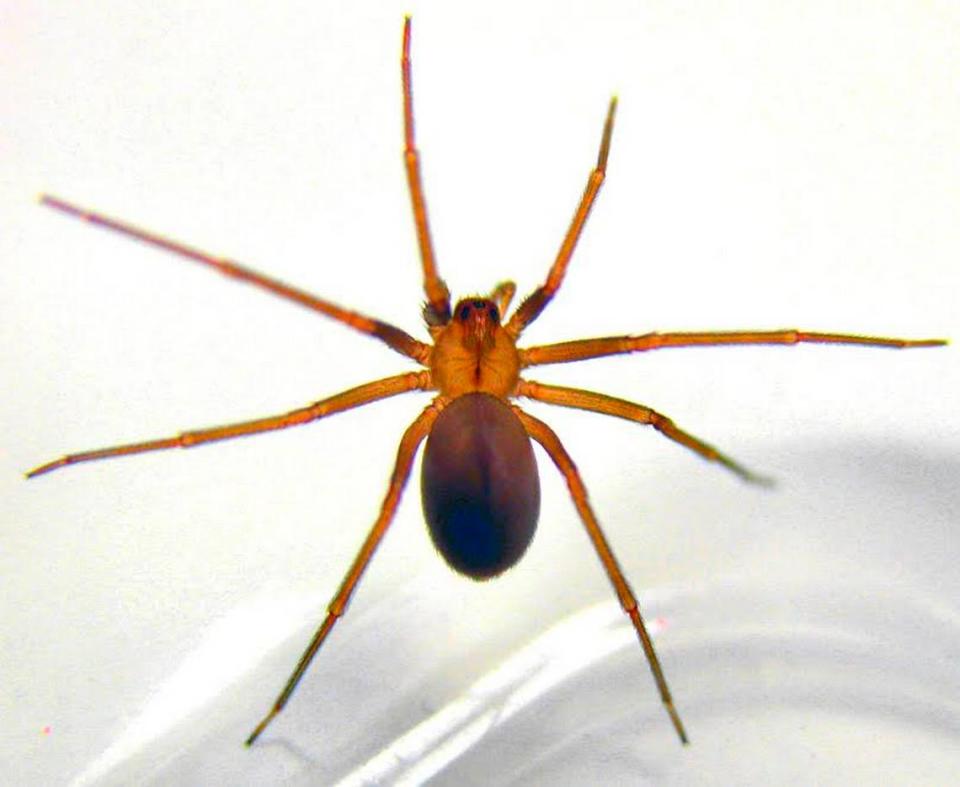What do venomous spider bites in SC look like? What should you do if bitten? Here are answers
You were working in your garden or cleaning out a closet and now you’re feeling pain on the back of your hand. It looks like there could be some swelling or redness around the spot where it hurts.
Were you bitten by a spider and if so, what should you do about it?
There are plenty of different species of eight-legged arachnids that hang out in South Carolina, but just four types are venomous. And while deaths from their bites are rare, the discomfort and pain they can cause shouldn’t be taken lightly.
According to the Mayo Clinic, the bites from venomous spiders in South Carolina can cause some serious signs and symptoms. But before we get into types of spider bites, let’s delve into the kinds of venomous spiders in South Carolina and how to recognize them.
Types of venomous spiders
Of the four venomous spiders in South Carolina, three are from the widow family: the southern black widow, the northern black widow and the brown widow, according to the Clemson University Cooperative Extension. The fourth venomous spider is the brown recluse.
Widows prefer to spend their time in crawlspaces, water meter boxes, wood piles and other secluded areas. The brown recluse during the day likes to rest in closets, boxes, under furniture, in attics under insulation and in ceiling light fixtures.
Female southern black widows exhibit the well-known hourglass shape while males do not, instead having red spots on the top or bottom of their abdomen.
The female northern black widow is similar in color and size to its northern counterpart, but instead of an hourglass, the red on its body shows as splotches or dots. Sometimes the marks will look like an hourglass split in the middle, or an incomplete hourglass.
Brown widow spiders are gray to brown in color with white and black markings on the top surface of their bulbous abdomens. The “hourglass” marking on the under surface of the abdomen is yellow to orange, and the legs have dark bands.
The brown recluse is small and light brown to yellow in color. The primary key to identification are the three pairs of eyes.

Below are the signs of widow and recluse spider bites and the symptoms that accompany them, according to the Mayo Clinic.
Widow spider bites
Redness, pain and swelling: You might have pain and swelling around the bite, which can spread into your abdomen, back or chest.
Cramping: You might have severe abdominal rigidity or cramping, which is sometimes mistaken for appendicitis or a ruptured appendix.
Nausea, vomiting, tremors or sweating: You might experience nausea, vomiting, tremors or sweating alone or in combination.
Recluse spider bites
Increasing pain over the first eight hours after the bite.
Fever, chills and body aches.
A bite wound with a pale center that turns dark blue or purple with a red ring around it.
A bite wound that grows into an open sore (ulcer) with the skin around it dying.
Recluse spider bite treatment
First aid treatment for brown recluse spider bites should focus on keeping the affected area clean and protected, according to the University of Pittsburgh Medical Center. If blistering or a bull’s eye-shaped wound develops, visit an urgent care facility immediately.
A physician will examine the brown recluse spider bite and prescribe antibiotics to prevent infection. In extreme cases, such as in cases of tissue death, surgery and hospitalization may be required.
Black widow spider bite treatment
Black widow spider bites require immediate medical attention. Call 911 immediately if you think you have a black widow spider bite and are having trouble breathing or experiencing full-body symptoms, such as shock.
You may need immediate medical transport depending on the severity of your symptoms.
If you’ve been bitten, visit an emergency department at your local hospital to seek treatment for your spider bite. On the way, ice the affected area to treat symptoms of swelling and pain.

